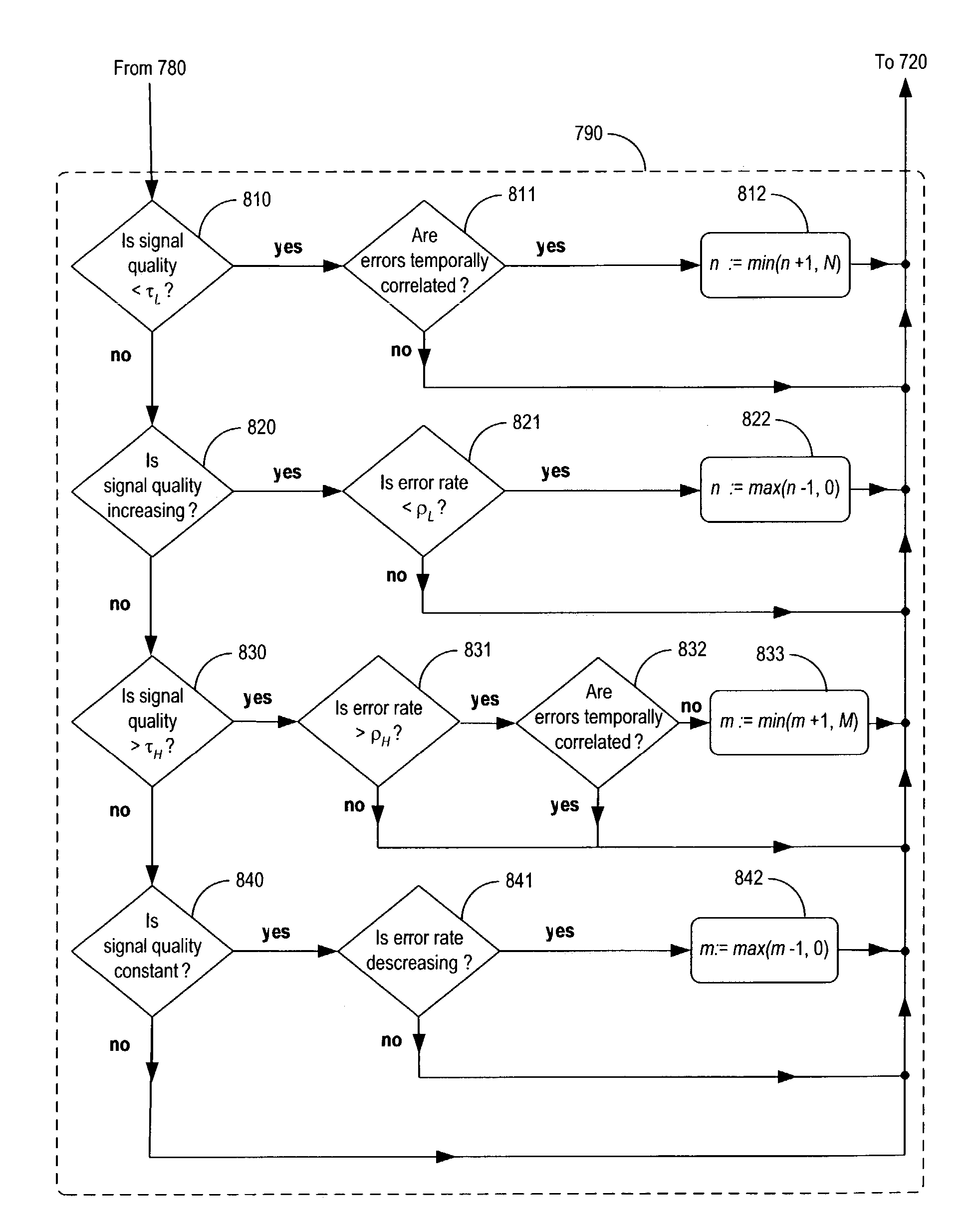Adaptive transmission rate and fragmentation threshold mechanism for local area networks
a local area network and transmission rate technology, applied in the field of telecommunications, can solve problems such as the question of whether the increase is due to fading, and achieve the effect of reducing frame error rate, and lowering transmission bit ra
- Summary
- Abstract
- Description
- Claims
- Application Information
AI Technical Summary
Benefits of technology
Problems solved by technology
Method used
Image
Examples
Embodiment Construction
[0020]FIG. 4 depicts a schematic diagram of wireless LAN 400, in accordance with the illustrative embodiment of the present invention. Wireless station 401-1 comprises an IEEE 802.11 radio (not shown) for communicating with wireless station 401-2, as well as a Bluetooth radio (not shown) for communicating with devices in Bluetooth piconet 410.
[0021]FIG. 5 depicts a schematic diagram of the salient components of wireless station 101-i, as shown in FIG. 4, in accordance with the illustrative embodiment of the present invention. As shown in FIG. 5, wireless station 101-i comprises IEEE 802.11 radio 505-i, Bluetooth radio 525-i, processor 550-i, host interface 555-i, memory 560-i, input device 570-i, output device 580-i, and host computer 590-i.
[0022]IEEE 802.11 radio 505-i comprises IEEE 802.11 receiver 510-i and IEEE 802.11 transmitter 520-i, and communicates with other wireless stations in well-known fashion via shared-communications band 595, as shown in FIG. 5.
[0023]IEEE 802.11 re...
PUM
 Login to View More
Login to View More Abstract
Description
Claims
Application Information
 Login to View More
Login to View More - R&D
- Intellectual Property
- Life Sciences
- Materials
- Tech Scout
- Unparalleled Data Quality
- Higher Quality Content
- 60% Fewer Hallucinations
Browse by: Latest US Patents, China's latest patents, Technical Efficacy Thesaurus, Application Domain, Technology Topic, Popular Technical Reports.
© 2025 PatSnap. All rights reserved.Legal|Privacy policy|Modern Slavery Act Transparency Statement|Sitemap|About US| Contact US: help@patsnap.com



